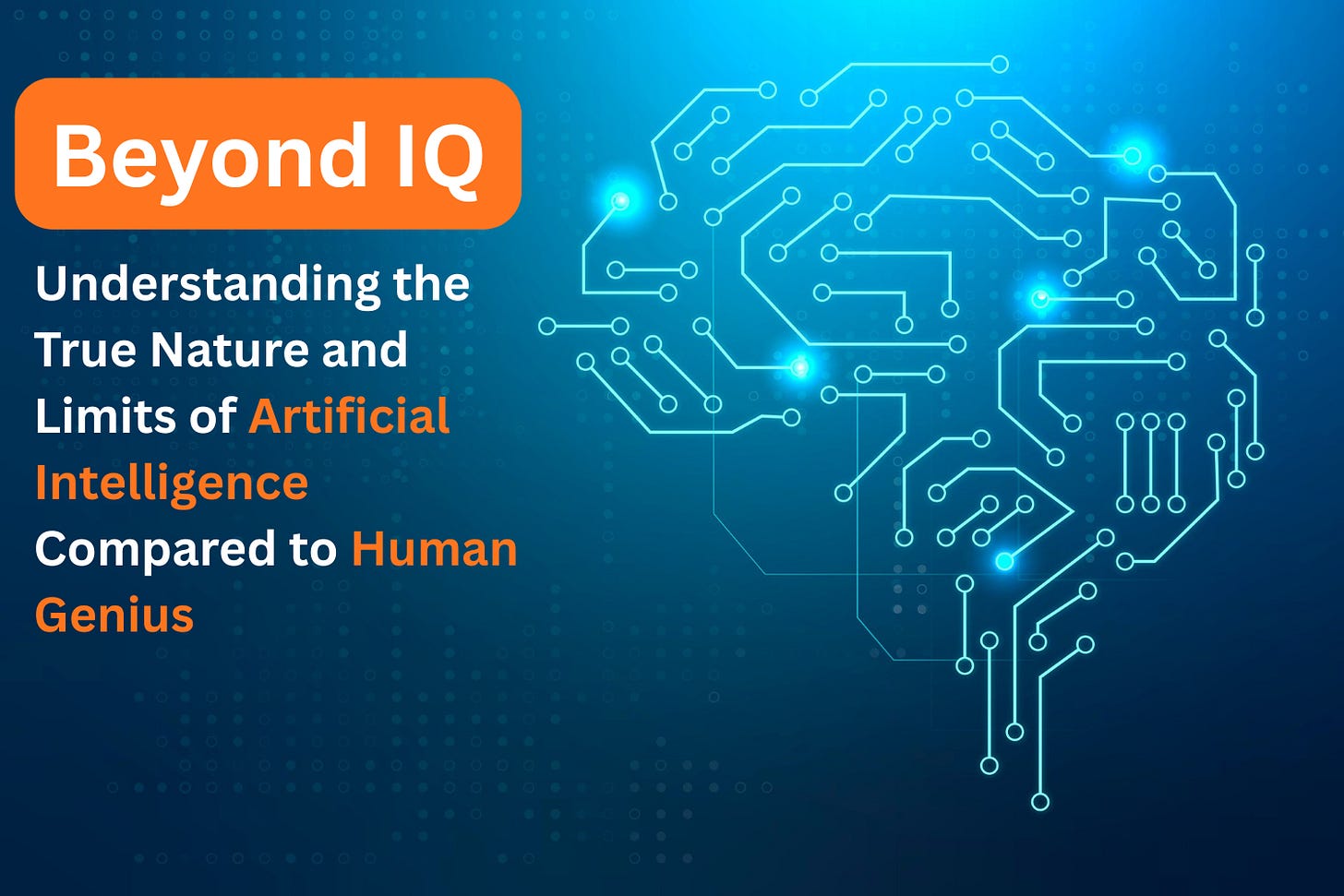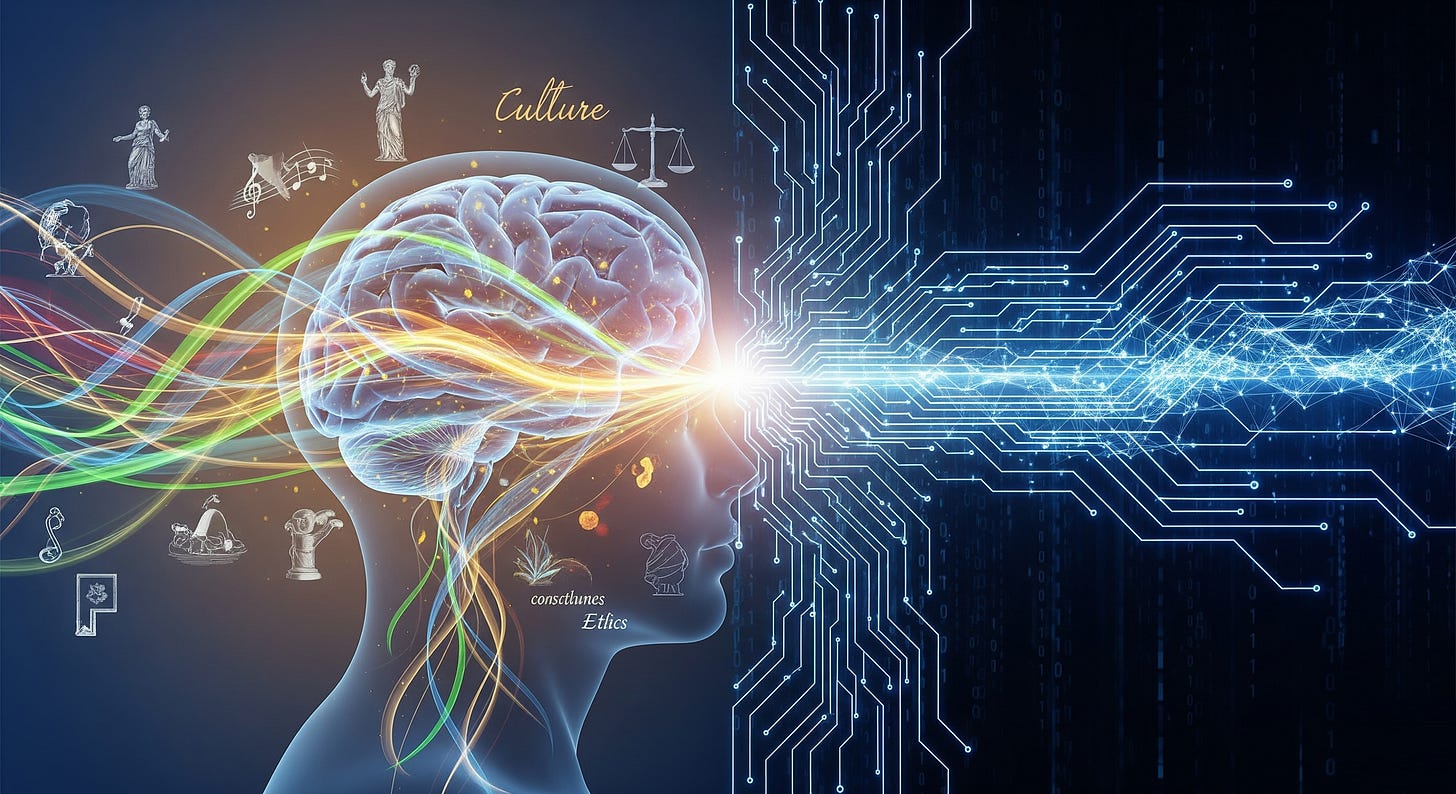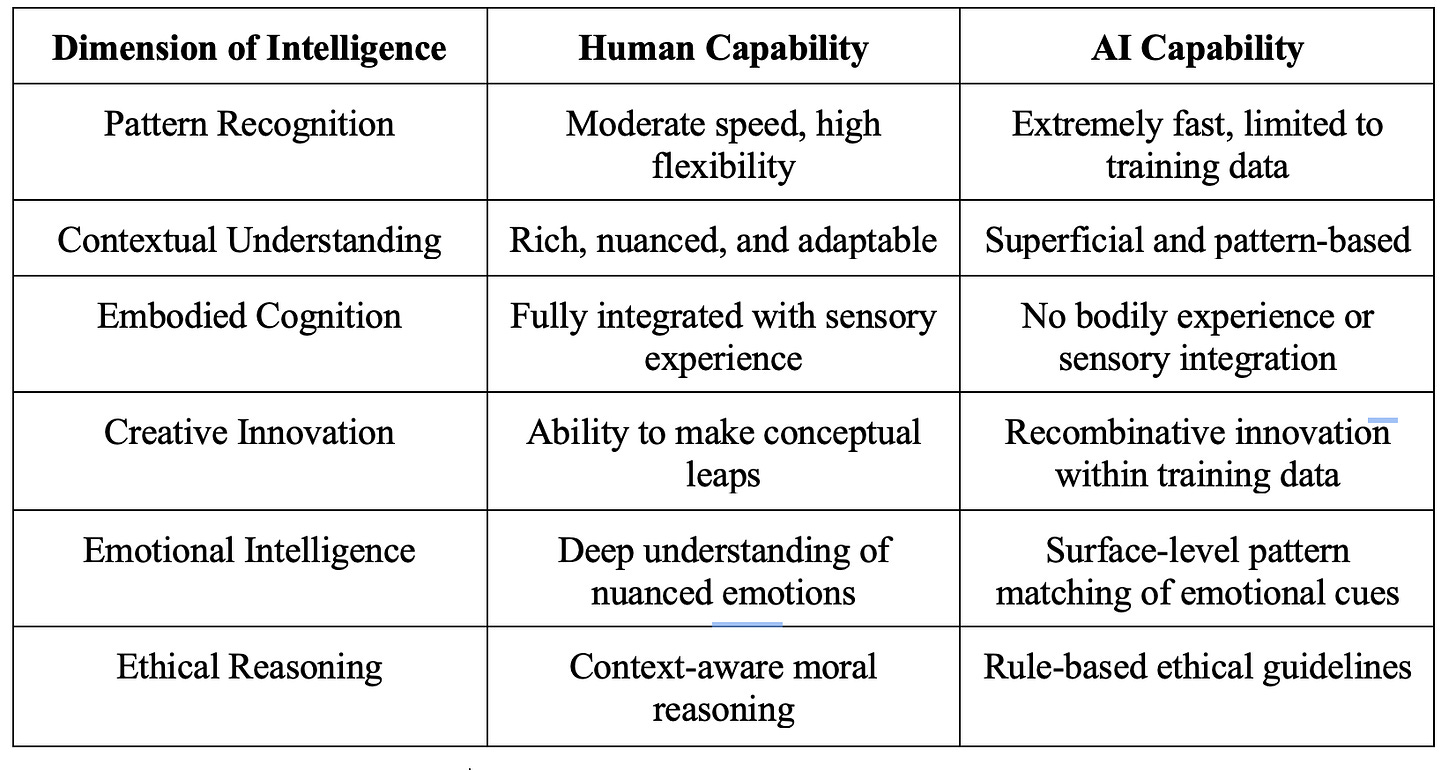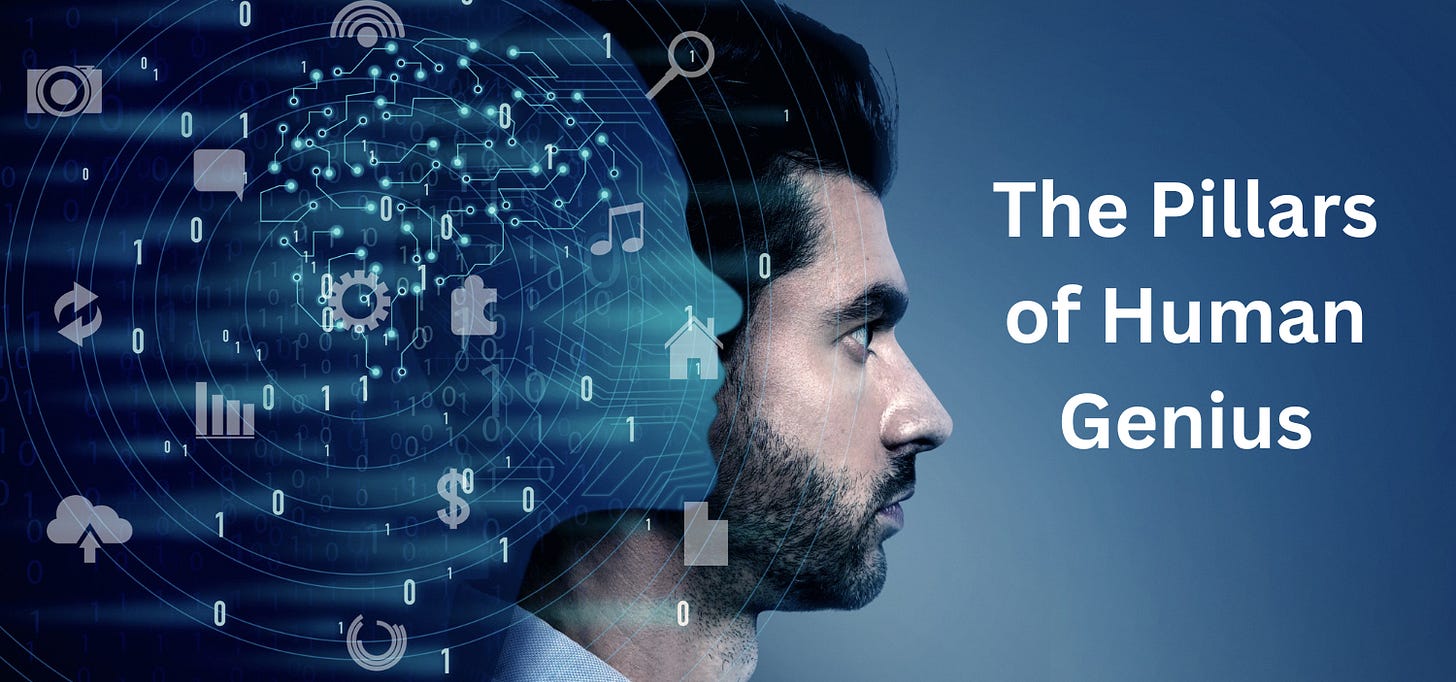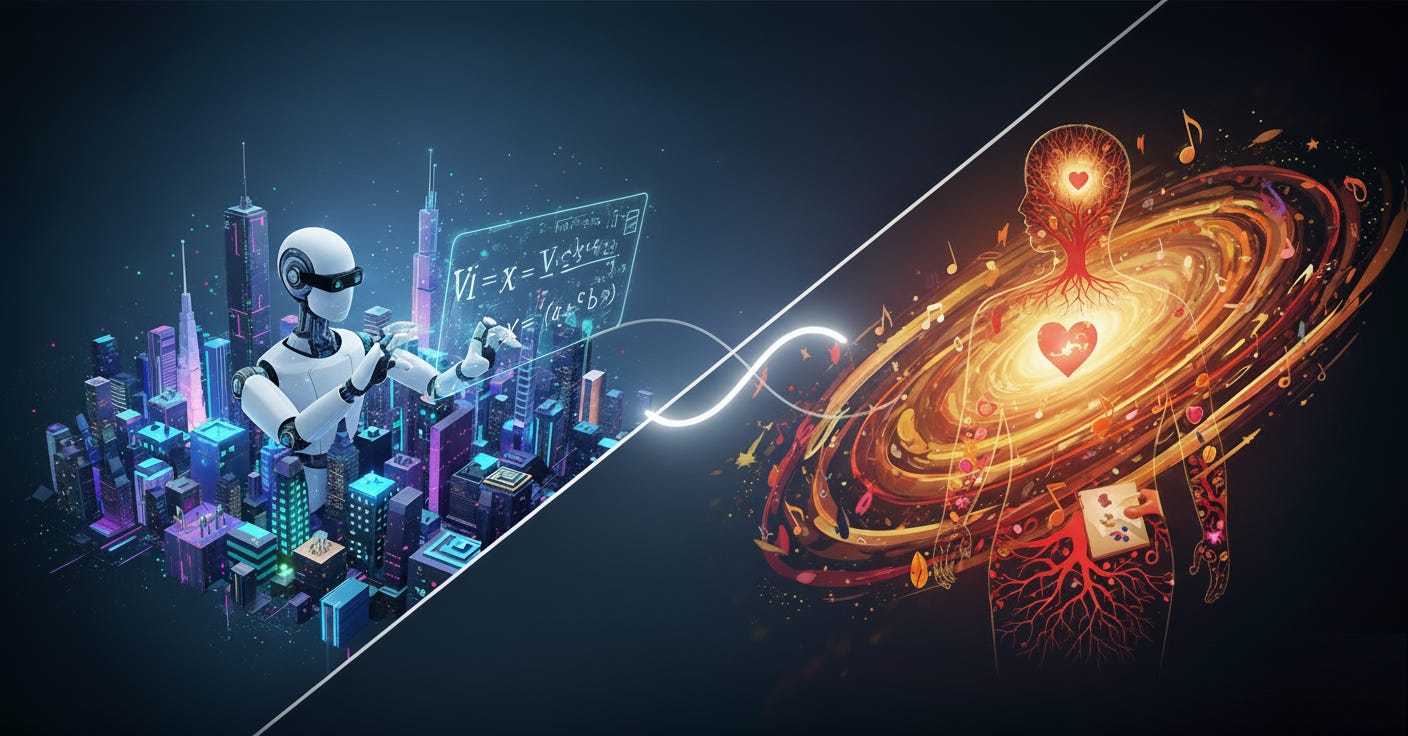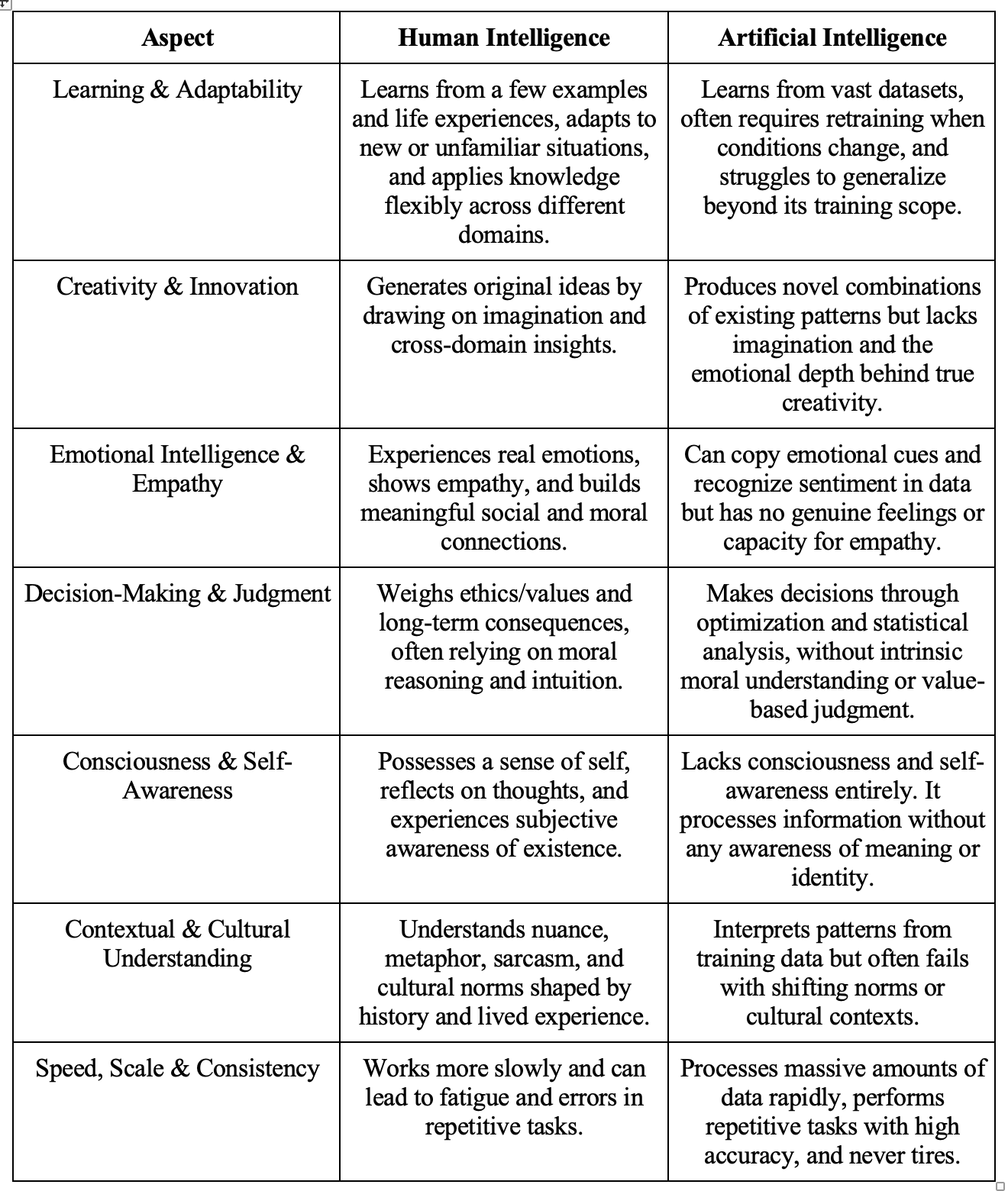Beyond IQ: Understanding the True Nature and Limits of AI Compared to Human Genius
The idea that intelligence can be measured solely by IQ scores is becoming outdated, as current research and advancing AI models show this narrow view is incomplete. IQ tests only assess specific cognitive abilities and are affected by education and culture. Jacques Grégoire states that IQ scores "measure only certain facets of intelligence" and cannot capture creativity, emotional understanding, or practical wisdom.
When we examine emerging AI models, this "IQ Fallacy" becomes evident. Machines now outperform humans in specific tasks such as solving math problems, recognizing images, performing data analysis, and much more. The latest OpenAI GPT 5 Pro scored an IQ of 148 on the official Mensa Norway IQ test, which exceeds the average human IQ. But is it truly appropriate to call it a genius?
Ask GPT-5 Pro about generating genuine emotions or ethical judgment, and you'll get your answer. It doesn't match the depth of human intelligence in creativity and moral reasoning. The truth is that machines are surpassing humans in specific tasks, but they are doing so without being truly "intelligent" in a human sense.
Human intelligence extends beyond standardized test scores. It encompasses reasoning, sensory experience, social context, creativity, and ethics. Recognizing these differences requires moving past IQ. Therefore, this article will explore the multiple dimensions of intelligence to understand how humans and machines differ, as well as their strengths, limitations, and opportunities for collaboration.
Deconstructing Intelligence Beyond Psychometrics
Can a single score truly capture the depth of human thought? Real intelligence goes beyond psychometrics. It combines reasoning, emotion, creativity, and judgment, which can't be reduced to a single number.
Key Dimensions of Intelligence
Look at the traditional IQ tests. You will see that they focus on logical reasoning, memory, and verbal/visual problem-solving. However, even narrow definitions of intelligence suggest that it encompasses many dimensions.
Analytical reasoning, memory, spatial skills, and processing speed are essential, but so are creativity, emotional understanding, social savvy, and practical "street smarts".
Howard Gardner's theory of multiple intelligences suggests abilities like musical, interpersonal, intrapersonal, and kinesthetic intelligence, among others. Similarly, modern cognitive science acknowledges that intelligence encompasses not only abstract reasoning but also learning capacity, response to new stimuli, and adaptability.
So, if we wrap up the key dimensions of intelligence, they would be:
Analytical reasoning
Memory
Spatial skills
Processing speed
Creativity
Emotional understanding
Social savvy
Practical "street smarts"
Musical intelligence
Interpersonal intelligence
Intrapersonal intelligence
Kinesthetic intelligence
Learning ability
Novelty response
Adaptability
Simply put, all these dimensions reflect that intelligence is a multifaceted capacity that shapes how humans think and create.
Human Intelligence as a Multidimensional Phenomenon
We cannot confine human intelligence to a checklist of abilities. It is a dynamic system where various dimensions interact in real-time. Let's understand this with an example.
Consider that you are crossing a busy city street where you:
Understand and interpret traffic signals (reasoning)
Pay attention to the sounds around you (sensory experience)
Adjust your course to prevent collisions (embodiment)
Decide when to cross by observing social cues (social context)
Imagine different paths (think creatively)
Assess risks with ethical awareness (ethics)
This integration highlights the rich complexity of human intelligence in daily life. Simply put, humans adapt to new situations and use judgment and values that go beyond basic cognitive skills. These multidimensional qualities make human intelligence adaptable and connected to culture and lived experience.
Artificial Intelligence: Pattern Recognition Without Understanding
Artificial Intelligence (AI) relies on a narrow base. Think of it as sophisticated pattern-recognition systems. LLMs can identify complex patterns in images or text and generate predictions without a grounded understanding of meaning.
Consider an AI-powered self-driving car navigating city streets where it:
Detects objects and pedestrians with cameras and sensors (pattern recognition)
Analyzes real-time traffic data to predict vehicle and pedestrian movement (data processing)
Selects routes using pre-loaded maps and GPS data (algorithmic planning)
Responds to unexpected obstacles with pre-programmed safety maneuvers (rule-based control)
Adjusts driving behavior based on learned patterns from human drivers (machine learning)
These processes lack genuine understanding or reasoning. AI cannot make ethical decisions. or creatively adapt beyond its programming and data patterns. As one AI observer notes, these models are “not designed to know; [they’re] designed to sound like [they] know”.
Current LLMs can make strange mistakes that no human would make with the same input. In short, AI processes inputs and correlations on a huge scale, but it doesn't have the underlying conceptual understanding that humans do.
Table: Key Dimensions of Human Intelligence vs. AI Capabilities
The Pillars of Human Genius: Where AI Falls Short
Human genius emerges from a unique fusion of self-awareness, innovative thinking, and deep cultural understanding. Let's explore these pillars to understand why true creativity and meaningful agency remain distinctly human domains:
Consciousness and Body-Mind Connection
Human intelligence is inseparable from the body. Our intelligence is based on sensory experiences and physical and emotional interactions with the world. We perceive, move, and learn through direct engagement with our environment, which helps us develop common sense and context that AI doesn't have.
Consciousness adds another layer, i.e., subjective experience and feelings that no machine possesses. In short, human intelligence arises from a physically embodied brain that interacts dynamically with the environment, which gives rise to consciousness and self-awareness. AI lacks such embodiment and phenomenal subjective experience, which limits its ability to handle nuanced real-world contexts and novel situations.
Creative Breakthroughs and Abstract Reasoning
The simple fact is that humans can create something truly new. It could be languages, art forms, scientific theories, or technologies that have never existed before. The ability to imagine and invent beyond existing knowledge sets human intelligence apart.
AI can create art or strategies by combining vast data, but it lacks purpose and emotional depth. AlphaGo's famous Move 37 resulted from brute-force simulation, not a human-like burst of creativity. Human breakthroughs come from cross-domain thinking and sudden insights, which machines still cannot match.
Agency and Cultural Embeddedness
Human intelligence is rooted in culture, history, ethics, and social interactions. We act purposefully and adapt based on our goals and moral principles. Our decisions and creativity are guided by ethical considerations and complex social norms. For example, humans weigh both logical outcomes and cultural, ethical, or social expectations when making choices.
Although advanced AI models are emerging today, artificial intelligence still lacks ethical understanding and cultural awareness. Its decisions do not take into account moral and societal contexts.
AI's Strengths and Inherent Constraints
Why can AI master specific tasks like playing chess but struggle to understand the world like a human? This gap highlights the difference between AI's narrow expertise and humans' broader understanding across various contexts.
Narrow Expertise vs. General Understanding
Artificial intelligence excels in narrow, well-defined areas where large datasets are available for training. The most advanced AI systems achieve superhuman performance on specific tasks, such as chess and pattern recognition. This is because they are trained on massive text corpora. In simple terms, it's powerful computing and targeted data that enable machines to perform quickly and surpass human abilities in narrow fields.
The narrow focus of AI does not equate to general understanding or common sense. IBM researchers found that AI systems excel at specific tasks but often lack a basic understanding of underlying principles. They made simple modifications to the New York City map by adding detours. With these changes, the navigation models failed. This demonstrated that the models had no grasp of routing principles or city geography; they were merely giving superficial, correct suggestions without real understanding.
On the other hand, humans have a general understanding that enables them to apply knowledge across many situations. People can reason through unfamiliar problems and adjust to changing environments. They can also connect abstract ideas with their experiences.
The Illusion of Understanding
Current AI systems can produce a convincing illusion of understanding through their smooth processing of language and patterns. This illusion is so strong that even experts can be fooled into believing these systems have greater abilities than they actually do.
As MIT researcher Ashesh Rambachan notes, "What we find in our work is that generative models can produce impressive outputs without recovering the underlying world model. When we see these impressive outputs, we naturally believe that these generative models are learning some underlying truth about the world." So, the disconnect between performance and understanding presents a challenge for evaluating AI capabilities.
Current AI systems excel at recognizing patterns. However, they lack the integrated architecture necessary for true understanding, such as combining knowledge representation and logical reasoning. Therefore, achieving artificial general intelligence will require new approaches that integrate multiple AI techniques working together, rather than simply scaling current models.
Core Differences Between Human and Artificial Intelligence
Human and artificial intelligence differ fundamentally. While AI has achieved impressive results in specific tasks, a gap still exists in how human minds understand, feel, and adapt.
The table below summarizes the key differences between human and artificial intelligence:
AI is matching and even surpassing humans in speed and pattern-based tasks. However, it remains deficient in creativity, consciousness, values, and ethical reasoning. In short, the core differences reinforce that human intelligence is more than just about processing information. It is about meaning, purpose, and context, which are the qualities that machines do not yet and may never fully possess.
Collaboration and Complementarity of AI and Human Intelligence
Throughout our discussion on AI versus human intelligence, we have observed that AI can perform narrow tasks efficiently, but it lacks the depth and self-awareness that characterize human intelligence. This difference makes collaboration essential, as AI's speed and scale complement the creativity and judgment humans bring.
Many experts emphasize leveraging the complementary strengths of humans and machines. They excel in different areas. Humans provide general reasoning, contextual understanding, and creativity, while AI offers speed, memory, and brute-force analysis.
Consider deploying AI to scan medical images for anomalies. Algorithms can analyze thousands of scans in minutes and identify suspicious patterns that human eyes might overlook. Then, it's up to the physician's expertise to interpret these findings and make life-critical decisions.
Similarly, AI and human collaboration are clear in modern customer service. AI chatbots serve as the initial contact for routine questions, while more complex issues are escalated to human agents.
In short, combining human creativity and intuition with AI's speed can drive innovative solutions across many industrial fields, such as healthcare, manufacturing, research, and more.
Conclusion
The rise of AI has prompted us to reconsider what true intelligence is. Machines demonstrate the remarkable power of computation, but their capabilities remain limited to specific tasks. The absence of consciousness and emotional depth, along with cultural understanding, reminds us that intelligence goes beyond data processing. It is lived experience, embodied awareness, and the capacity to envision future possibilities.
Instead of seeing AI as a rival to human intelligence, the opportunity lies in their complementarity. Therefore, we conclude that the future of AI and human intelligence is not about competition but collaboration.


